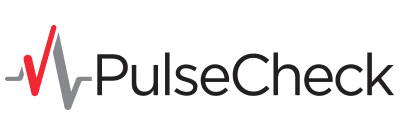The Growing Need for Digital Solutions in Emergency Departments
The Canadian healthcare system has been continuously demanding technological advancements to improve patient care, particularly in emergency departments. One of the key solutions that has gained traction in recent years is the implementation of Electronic Medical Record (EMR) systems. These digital tools are designed to replace traditional paper-based records, enabling healthcare professionals to access, manage, and share patient information more efficiently.
eCTAS: A Game Changer for Triage and Patient Prioritization
The Canadian Triage and Acuity Scale (CTAS) is an essential tool for prioritizing patient care in emergency departments across the country. By incorporating the electronic Canadian Triage and Acuity Scale (eCTAS), EMR systems can significantly streamline the triage process. eCTAS enables healthcare professionals to quickly and accurately assess patient acuity, ensuring that the most critical cases receive immediate attention. This digital solution enhances patient safety and contributes to overall efficiency in the emergency department by replacing a long paper form.
Digitizing Emergency Records for Improved Accuracy and Efficiency
The transition to digitizing emergency records is crucial for reducing the risk of human errors, which can negatively impact patient safety. EMR systems allow healthcare professionals to access accurate, up-to-date patient information, such as medical histories, medication lists, and allergies. This comprehensive view of a patient’s medical history facilitates better-informed decision-making, reduces mistakes due to reading and writing errors, and thus reduces the likelihood of adverse events.
Reducing Transcription Errors with EMR Systems
One of the major benefits of EMR systems is their ability to reduce transcription errors. Traditional paper-based records are susceptible to illegible handwriting, misinterpretation, and loss or damage. EMR systems minimize these risks by standardizing documentation and providing clear, legible records. With built-in error-checking features, EMR software can alert healthcare providers to potential discrepancies or inaccuracies, promoting patient safety and improving the overall quality of care.
Integrating EMR Systems for Enhanced Collaboration and Communication
Effective communication and collaboration between healthcare providers are vital to delivering high-quality care in emergency departments. EMR systems should facilitate seamless information sharing among medical professionals, ensuring that every care team member has access to the most current patient information. This enhanced communication allows for quicker, more informed decision-making and can help prevent medical errors or miscommunications that could compromise patient safety.
Conclusion
The implementation of EMR systems in Canadian emergency departments is a critical step toward improving patient safety and overall quality of care. Emerg Healthcare providers can enhance efficiency, communication, and decision-making processes by integrating digital tools such as eCTAS, digitizing emergency records, and reducing transcription errors. As the healthcare landscape continues to evolve, the adoption of EMR systems in emergency departments will play a vital role in safeguarding patient well-being and ensuring the highest standards of care.
PulseCheck was built by ED docs and RNs’ and contains the eCTAS abilities that are required for Ontario Emergency departments. If you would like to learn more about the PulseCheck EMR built specifically for Emergency Departments with Canadian-specific features, please click HERE.
